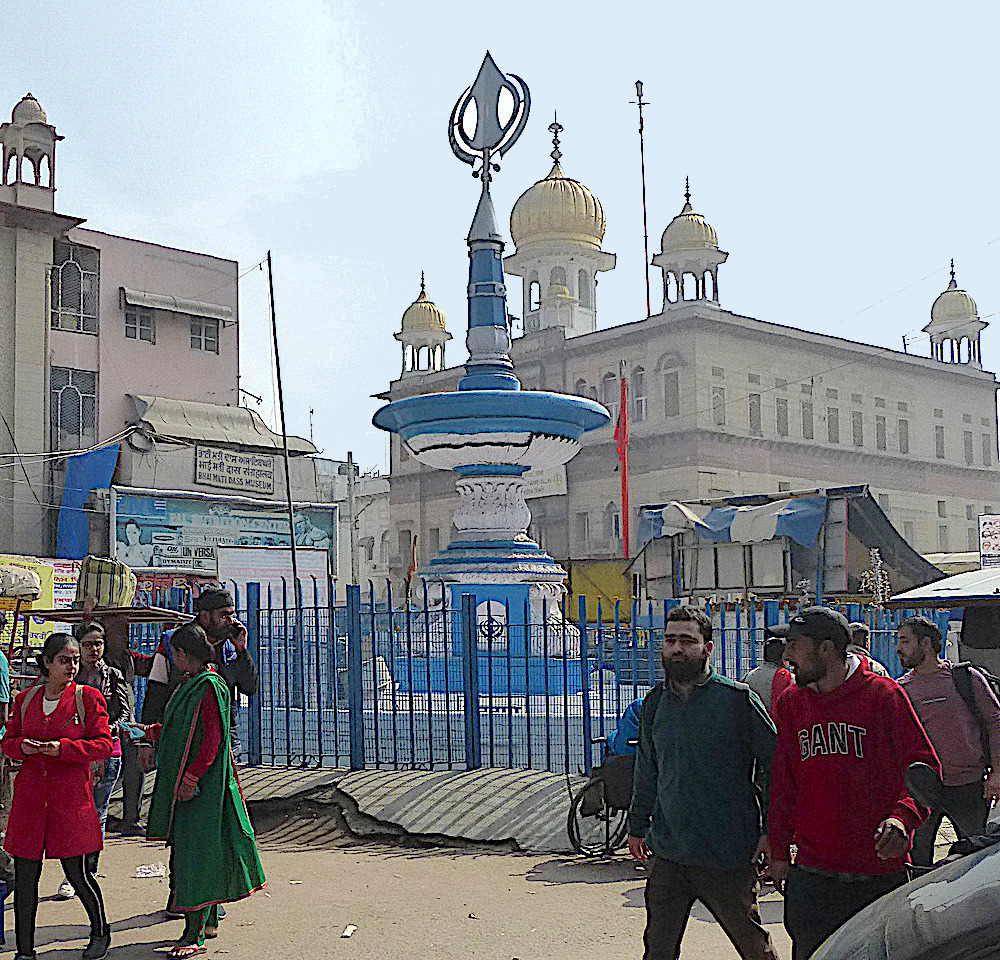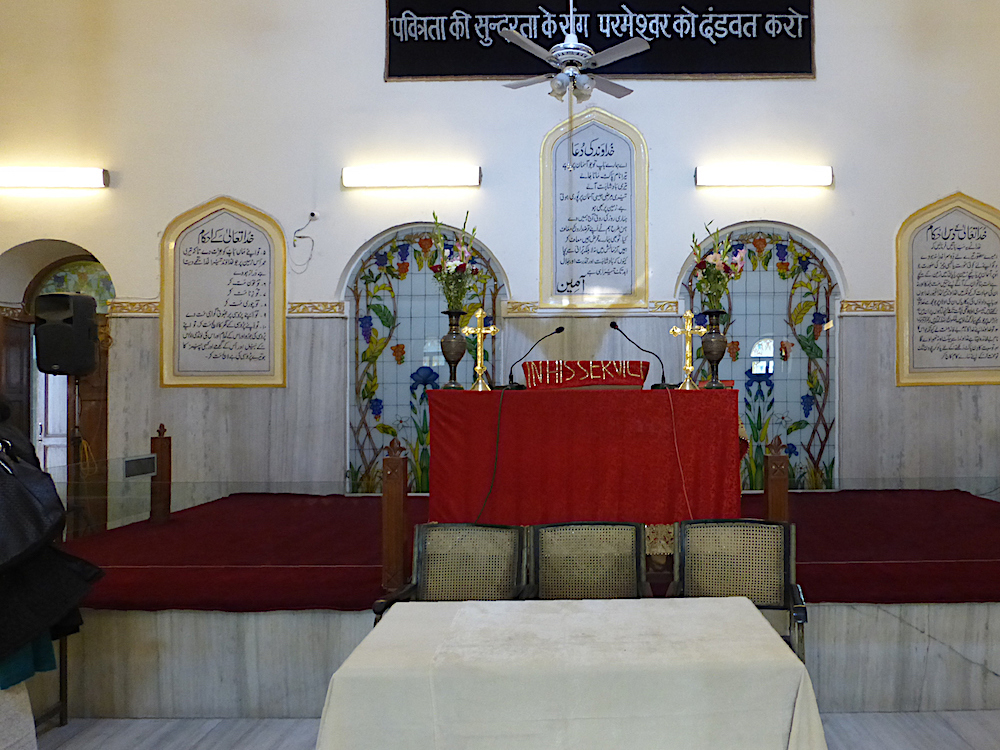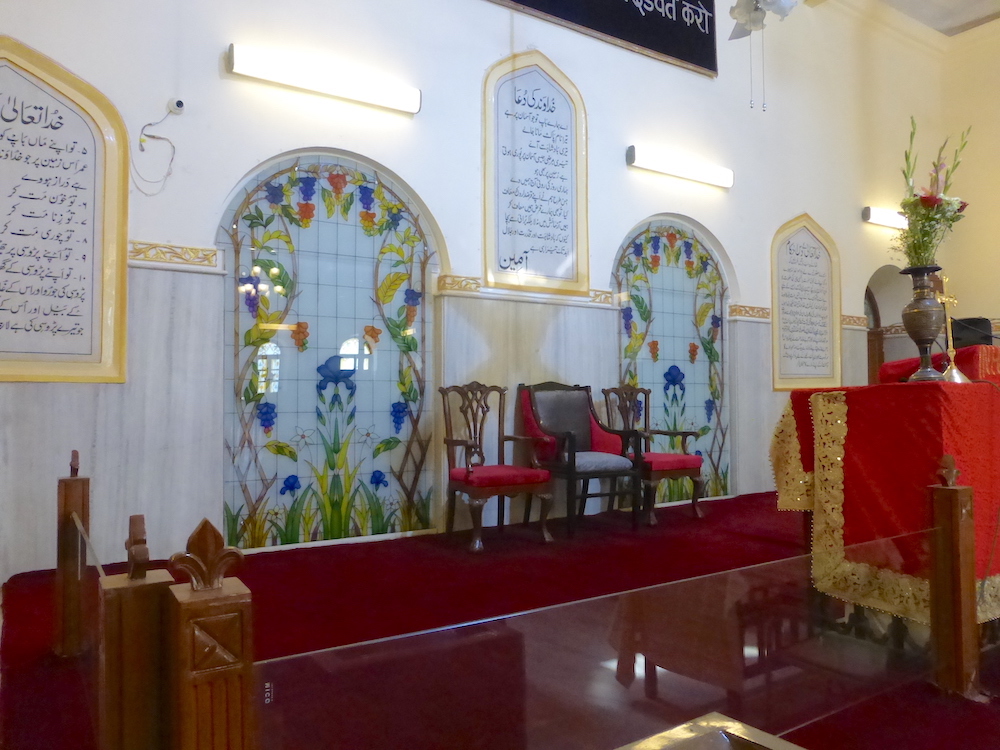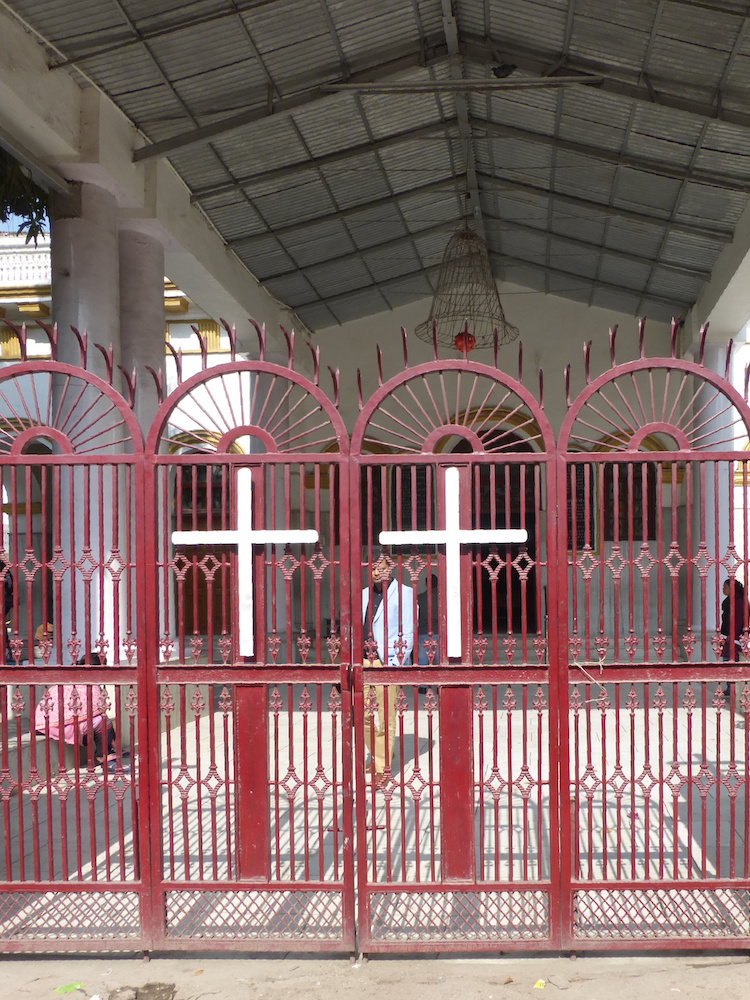Photographs by the present author. You may use these images without prior permission for any scholarly or educational purpose as long as you (1) credit the photographer and (2) link your document to this URL in a web document or cite the Victorian Web in a print one. [Click on the images for larger pictures.]


Left: The white cross of the church stands out over the its re-built roof. Right: Entering the courtyard through the main gates.

Chandni Chowk's blue fountain.
The Central Baptist Church in historic Old Delhi is on the main road in Chandni Chowk, which is thronged with market traders, and close to a Sikh Gurudwara and landmark blue fountain. Entirely integrated into the area, it is thought to represent the original Christian mission in northern India, and to be "the oldest Hindustani church in Delhi and the largest of the Baptist congregations" (Alter et al. 92). Although it had earlier origins, Lucy Peck's architectural guide to Delhi dates the building itself to 1858 (199) which still predates Old Delhi's town hall. Since part of the complex is used for a primary school, the courtyard is often crowded.
Inside the Courtyard


The neo-classical building is quite grand with a wide colonnaded porch on the south side, with stout columns, a central portico and pediment. Above its roof, the only rebuilt part of this heritage building, stands the simple white cross shown at the top of this page.
Entering the Church


Left: The notice above this entrance says, "Please switch off your mobile phones." Right: At first glance, the interior looks quite plain.
The southern entrance gives a view of the church with its rows of dark wooden pews and simple altar. The most decorative touch is supplied by the floral painting of the tiles set in the round arched alcoves either side of the altar and in the stained glass lights over the doorways. There is also a delicately carved foliate frieze linking these panels with scriptural texts in Urdu, in gilded Indo-Gothic frames. The effect is very attractive and blends European and Oriental design with Christian exhortation.


Two more views of the interior.



Among the brass memorials are the one in the middle above, in memory of John Mackay, Biliyat Ali (a convert from Islam), Mrs Thompson and two daughters, all of whom died in the 1857 uprising; and the one on the right above, in memory of Dr. Saul David and his wife Alice. Dr David was closely associated with the church and its mission for about sixty years, and died in 1843. The inscription says: "The poor and the sick approached him with hope and courage and were never disappointed." This last is important, because although the number of converts was not huge, in terms of India's enormous population, the efforts of such people did, according to historian Percival Spear, "pave the way for the breakthrough in Hindism itself from passive realization to the active philanthropy associated with the name of Mahatma Gandhi" (164).

Other Churches in Old Delhi
Bibliography
Alter, James P. Alter, H. J. Singh, E. Y. Campbell and B. M. Boal. The Church as Christian Community: Three Studies of North Indian Churches. Ed. Victor E. Hayward. London: Lutterworth, 1966.
Peck, Lucy. Delhi: A Thousand Years of Building. New Delhi: Roli (Lotus), 2005.
Spear, Percival. A History of India, Vol. II: From the Sixteenth to the Twentieth Century. Delhi: Penguin India, 1990.
Created 4 February 2021